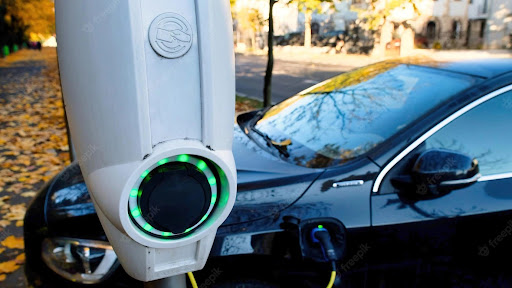Every vehicle has a battery inside to power up its function. An automobile vehicle battery is an example of a wet cell battery, with six cells. It’s a rechargeable battery that is used to start a motor vehicle. Its main objective is to provide an electric current to start the electric-powered motor, which further starts the chemically-powered internal combustion engine that actually propels the vehicle.
They even have a high power-to-weight ratio, high energy efficiency, good high-temperature performance, and low self-discharge. Most elements of lithium-ion batteries can be recycled, however, the price of material recovery remains a challenge for the industry.
An electric vehicle battery (EVB, also referred to as a traction battery) is a rechargeable battery used to run the electric motors of a battery electric vehicle (BEV) or hybrid electric vehicle (HEV). Typically lithium-ion batteries, are specifically designed for high electric charge (or energy) voltage.
Electric vehicle batteries distinguish from starting, lighting, and ignition (SLI) batteries as they are designed to provide power over a sustained time span and are deep-cycle batteries. The most common battery type in modern electric vehicles is lithium-ion and lithium-polymer, because of their high energy density compared to their weight.
Since the late 1990s, changes in lithium-ion battery technology have been driven by demands from portable electronics like mobile phones, power tools and laptop computers. The BEV and HEV marketplace has reaped the advantages of these upgrades both in energy density and performance. Unlike earlier battery chemistries, notably nickel-cadmium, lithium-ion batteries can be discharged with cobalt recovery and recharged daily and at any state of charge.
Lithium-ion (and the mechanistically similar lithium polymer) batteries, were initially developed and commercialized for use in consumer electronics and laptops. With their long cycle life and high energy density, they have become the leading battery type for use in EVs. The first commercialized lithium-ion chemistry was a lithium cobalt oxide cathode and a graphite anode.
New data has shown that the use of fast charging and exposure to heat, promote the degradation of Li-ion batteries more than actual use and age and that the average electric vehicle battery will retain 90% of its initial capacity after over 5 years of its service.
Modern automobiles such as hybrid cars and electric vehicles use a lithium-ion batteries. The battery has less weight and is able to store significantly more energy as compared to traditional lead batteries. However, Li-ion batteries generally have lesser lifespans, a maximum of three years regardless of use which is one of the drawbacks.
In conclusion, an automotive battery is the main power source of our vehicle’s engine. It’s one of the charging systems essential that cannot be evicted from a vehicle, most especially in modern electric and hybrid cars. Widespread battery recycling of these electric vehicles would keep hazardous materials from entering the environment during their production and at the end of a battery’s useful life. The material recovery from recycling would also reintroduce essential materials back into the supply chain and would increase the domestic sources for such materials. Work is now underway to develop battery-recycling processes that minimize the life-cycle impacts of using lithium-ion and other kinds of batteries in vehicles.



